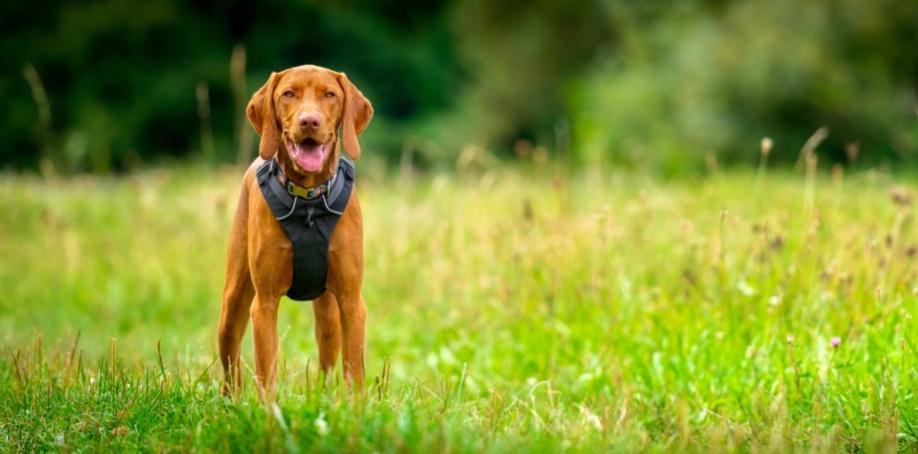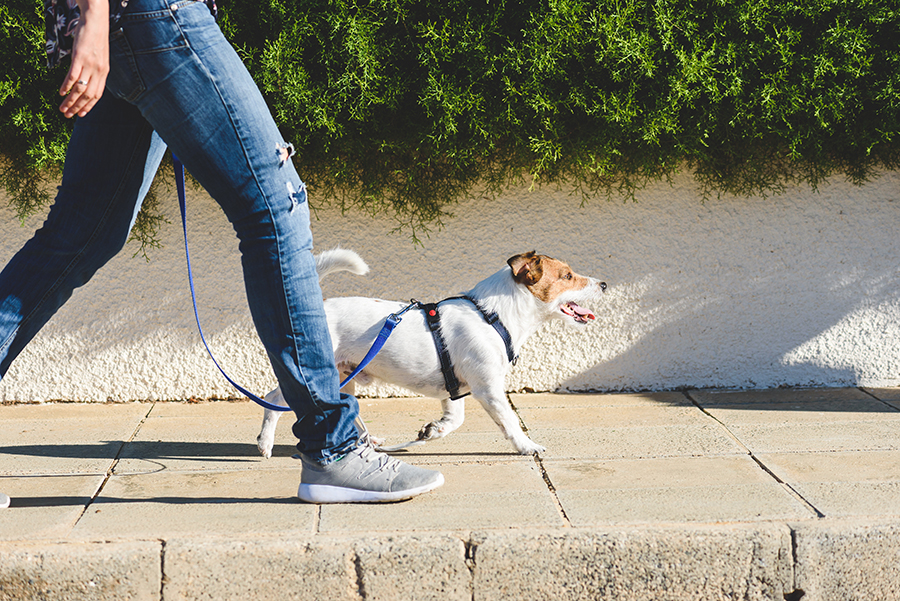
The tone for a walk should be set before you and your dog step out of your home. For dogs, walks serve two purposes. Physically, going for a walk meets your dog’s exercise requirements and allows them to dispel any pent-up or excess energy. But mentally, walks provide mental stimulation by visiting areas outside of the home. When you take your dog for a walk, they can explore new places, people, and smells.
Calm Harnessing and Leashing
Although walks can be an exciting time for your canine, you want to make sure that they are in control of their energy. Too much excitement may lead to pulling or general wild behavior.
To start, your dog needs to feel relaxed when you put on their leash or harness. If they have trouble settling down or staying still, give them a job or purpose such as a “sit” or “wait” command.
Attach the leash once your dog can sit or stay still. If at any point your dog loses focus, remove the leash, and start over. You want your dog to understand that being in a calm state result in them going for a walk.
Once your dog is back in a sit or wait, you may finish putting the leash back on.
Impulse Control
Some dogs will get so excited for their walk that they shoot outside the moment the door cracks open. As a rule, you should be going for a walk with your dog; your dog should not be pulling you across town. If your dog struggles with their impulse control, you may need to do some correctional training:
Have your dog in a sit by the door. They should be waiting for your next command.
- Slowly start opening the door. Feel free to repeat the wait command.
- If your dog breaks a wait at any point, close the door and start over. Especially in the early stages of training, your dog may try to bolt outside quickly. Eventually, they will learn that they need to wait for you to release them from the wait or the door will close.
- Once the door is opened all the way, release your dog. As you work on this skill, increase the time between opening the door and releasing your dog.
Conclusion
Walking your dog should be an enjoyable activity offering the opportunity to strengthen your bond as you spend more time together. However, the success of the walk starts at home. You want your dog to go for a walk with you, not lead you on a wild goose chase. By focusing on the small steps, you reinforce the idea that you two are partners and that your dog should keep you in mind as they explore the new and outside world.





